15 million cubic meters of lava flowed in the first 7 hours of eruption in Iceland
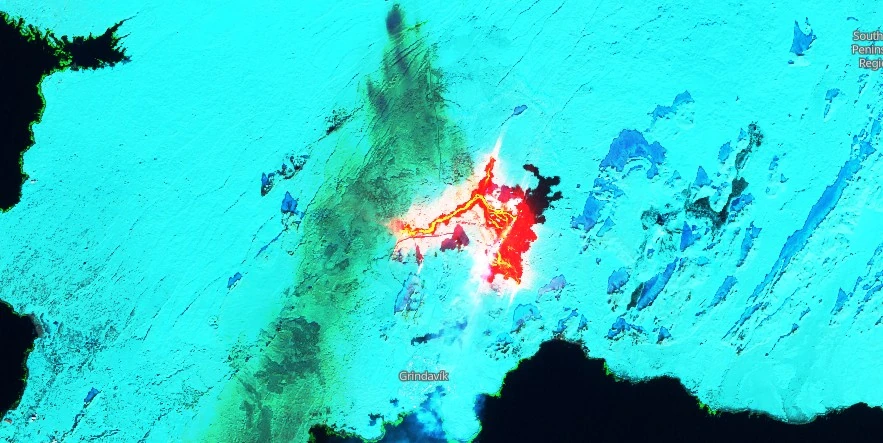
Data released by the Icelandic Met Office (IMO) shows that about 15 million cubic meters (530 million cubic feet) of lava flowed in the first seven hours of the eruption near Grindavik on February 8, 2024. The eruption has since decreased significantly but is still not over.
Volcanic tremors began to subside around 12:00 UTC yesterday, roughly six hours following the eruption’s onset. This decrease was marked by a reduction in eruptive activities along the volcanic fissure, with the activity becoming more concentrated within individual craters.
Last evening, temporary surges in volcanic tremor were observed, aligning with heightened activity within the craters. Overnight, this activity saw a further decline, leading to a scenario where, between 07:00 and 08:00 on February 9, only two eruptive craters remained active.
For the past hour, no lava fountaining has been observed on web-cameras but activity within the craters might still be ongoing, IMO said at 13:00 UTC.
A satellite radar image taken at 14:56 UTC yesterday shows surface subsidence of 10 cm (4 inches) in the Svartsengi area, north-west of Mt. Þorbjörn, when magma flowed from there towards Sundhnúkur crater row. Model calculations based on these data suggest that about 10 million m3 (353 million ft3) of magma has flowed from the magma reservoir beneath Svartsengi towards the eruption site at Sundhnúkur crater row.
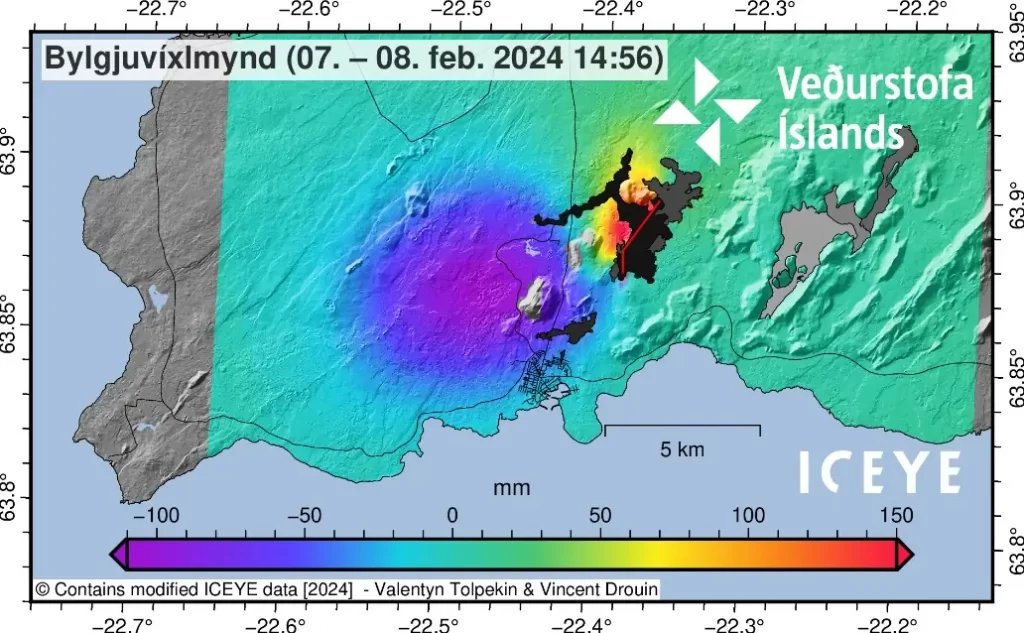
In 24 hours to 11:30 UTC today, there has been minor seismic activity in the area of the eruption. About 40 earthquakes have been recorded there, all around or below M1.0.
Estimates of the volume of lava that flowed from the time the eruption began, at 06:02 UTC until 13:00 UTC, is about 15 million m3 (530 million ft3), which means that the average magma flow during the first seven hours of the eruption was about 600 m3 (21 200 ft3) per second.
Although the eruption has decreased significantly, it is still too early to say that it is ending.
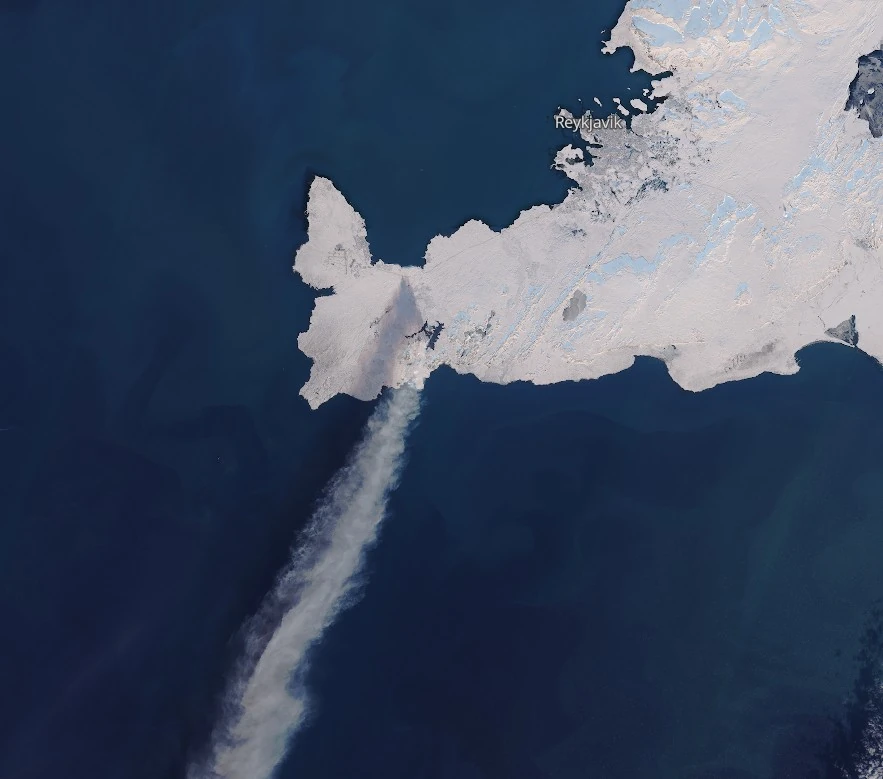
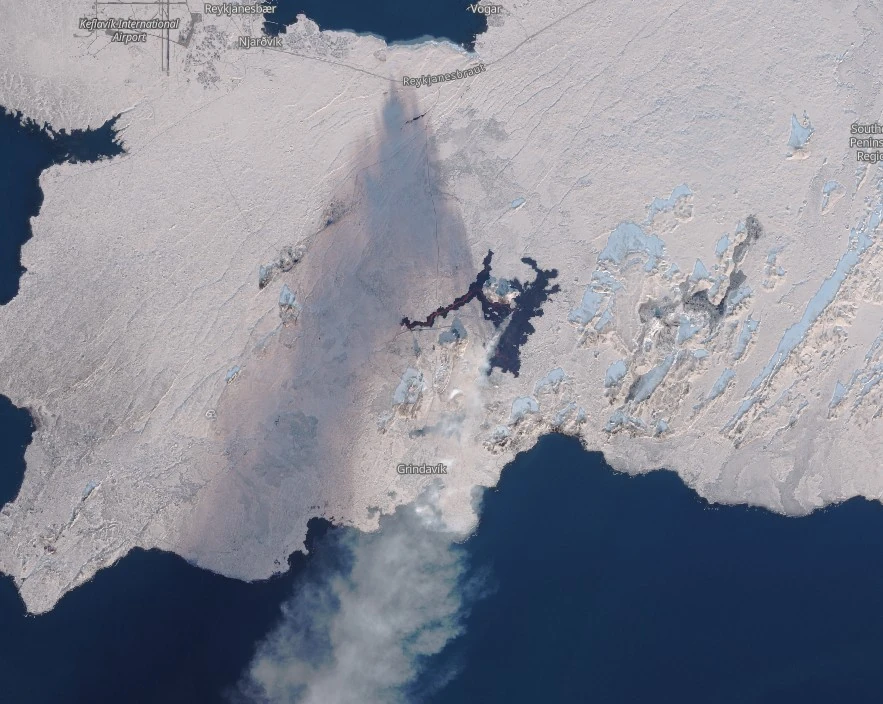
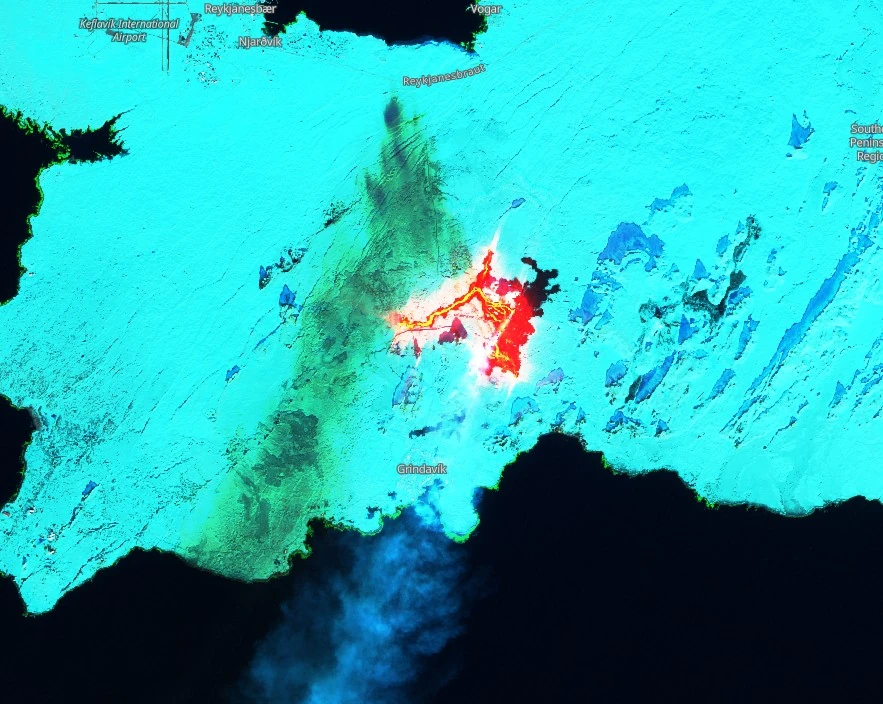
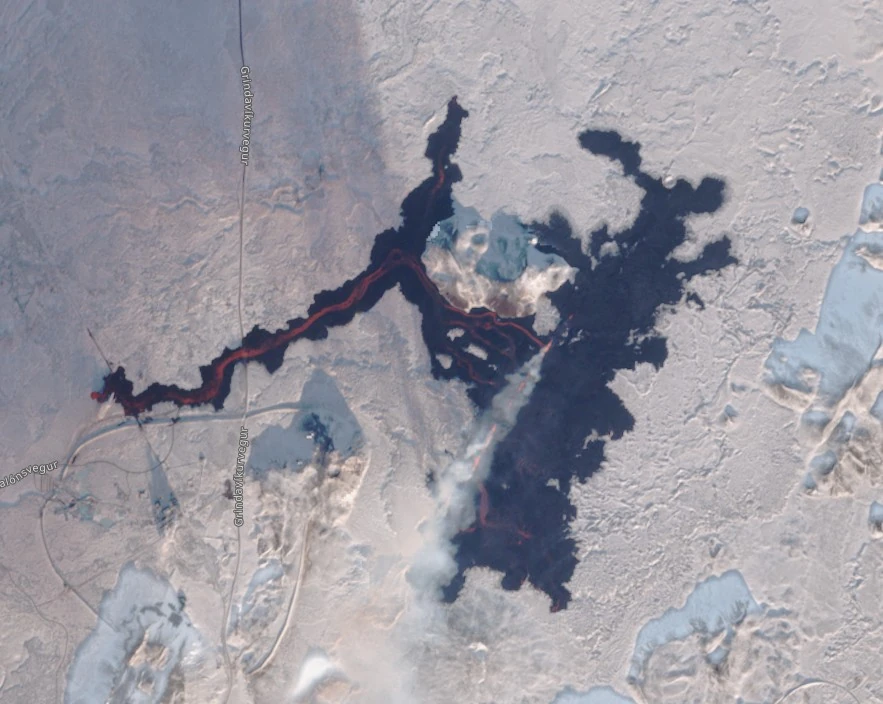
References:
1 Eruptive activity diminishes further – IMO – February 9, 2024
Featured image credit: Copernicus EU/Sentinel-2, The Watchers. Acquired on February 8, 2024

Commenting rules and guidelines
We value the thoughts and opinions of our readers and welcome healthy discussions on our website. In order to maintain a respectful and positive community, we ask that all commenters follow these rules.